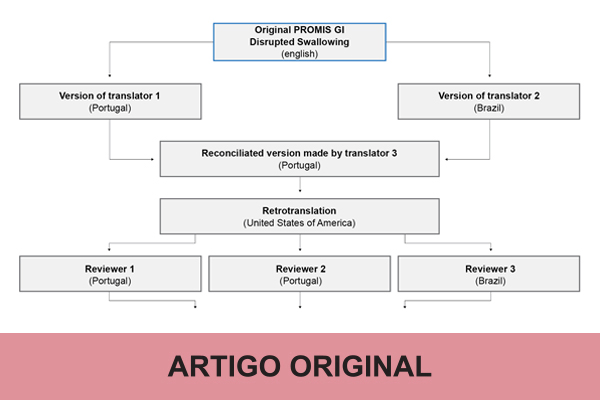SOCIAL MEDIA
Portuguese Medical Association's Scientific Journal

Introduction: Dysphagia is a prevalent condition (20%), and occurs more frequently in women and in older people. It negatively impacts innumerous aspects of patient’s personal and professional lives. Patient-reported outcomes allow patients to directly quantify their experience regarding dysphagia and evaluate its true impact on quality of life. Among the scales available, Patient-Reported Outcomes Measurement Information System Gastrointestinal (PROMIS GI) Disrupted Swallowing stands out because it is a robust instrument that can be applied regardless of the type and etiology of dysphagia. The aim of this study was to translate, culturally adapt and validate PROMIS GI Disrupted Swallowing scale for the Portuguese-speaking population.
Material and Methods: Firstly, the seven items of the scale were translated and transculturally reviewed following the systematic method proposed by the Functional Assessment of Chronic Illness Therapy (FACIT). Afterwards, the pre-test version of the questionnaire was administered to a convenience sample (n = 6) for semantic evaluation, with the aim of detection and subsequent correction of possible problems in the translation. The final translated and certified version of the scale was administered to 200 voluntary adult participants (n = 123 healthy; n = 77 dysphagia) in Portugal, for evaluation of reliability and validity.
Results: The Portuguese version of PROMIS GI Disrupted Swallowing presented acceptable internal consistency (coefficient of Cronbach’s α of 0.919) and adequate test-retest reliability (intraclass correlation coefficient of 0.941). The translated version of the scale revealed a strong correlation with both Eckardt score (p < 0.001; ρ = 0.782) and the quality-of-life questionnaire EuroQol-5D (p < 0.001; ρ = -0.551), demonstrating evidence of convergent validity.
Conclusion: The Portuguese version of PROMIS GI Disrupted Swallowing scale presented conceptual, semantic, cultural and measurement equivalence relatively to the original items. The results attained demonstrated that the translation of this scale to Portuguese is reliable and valid for use both in clinical practice and for research purposes.